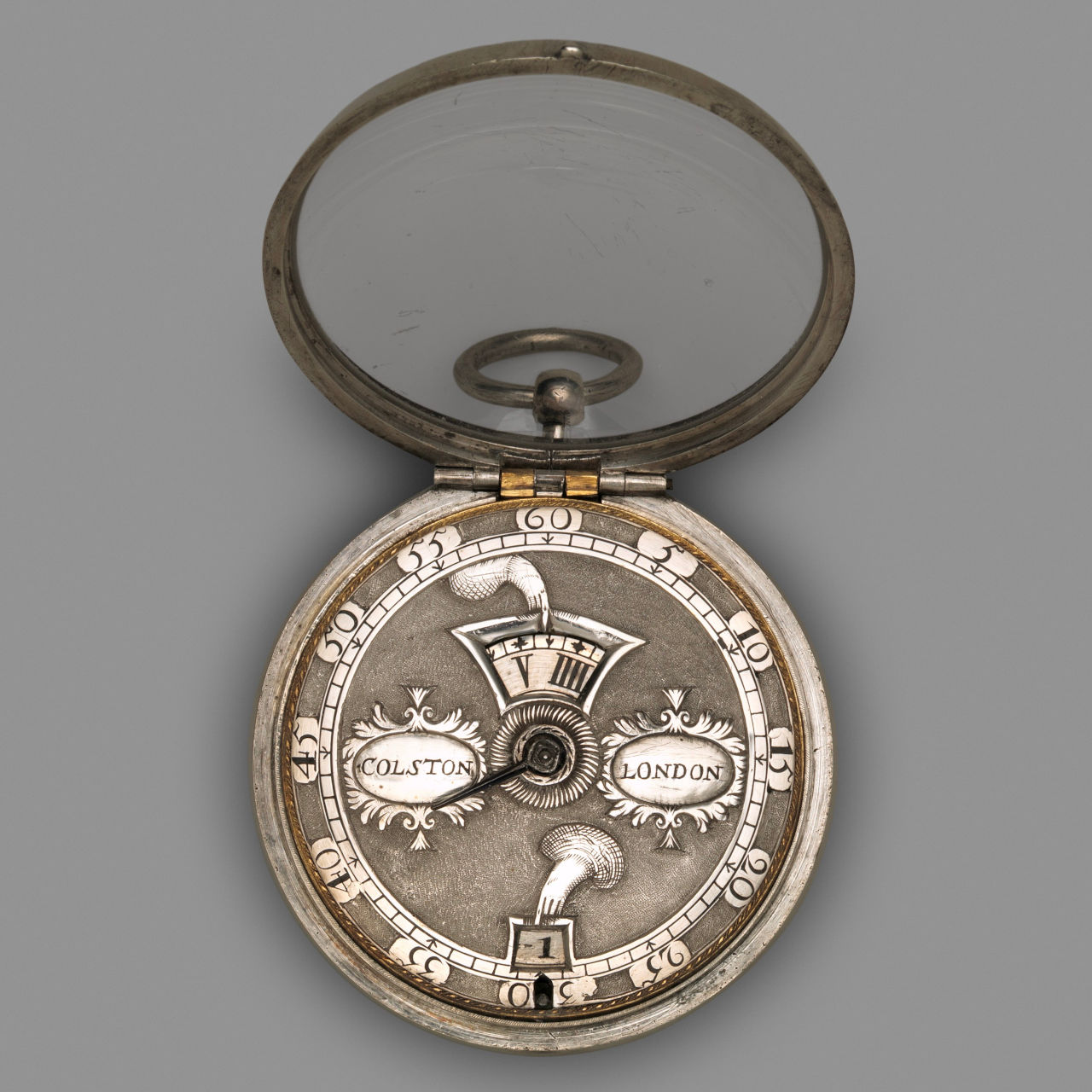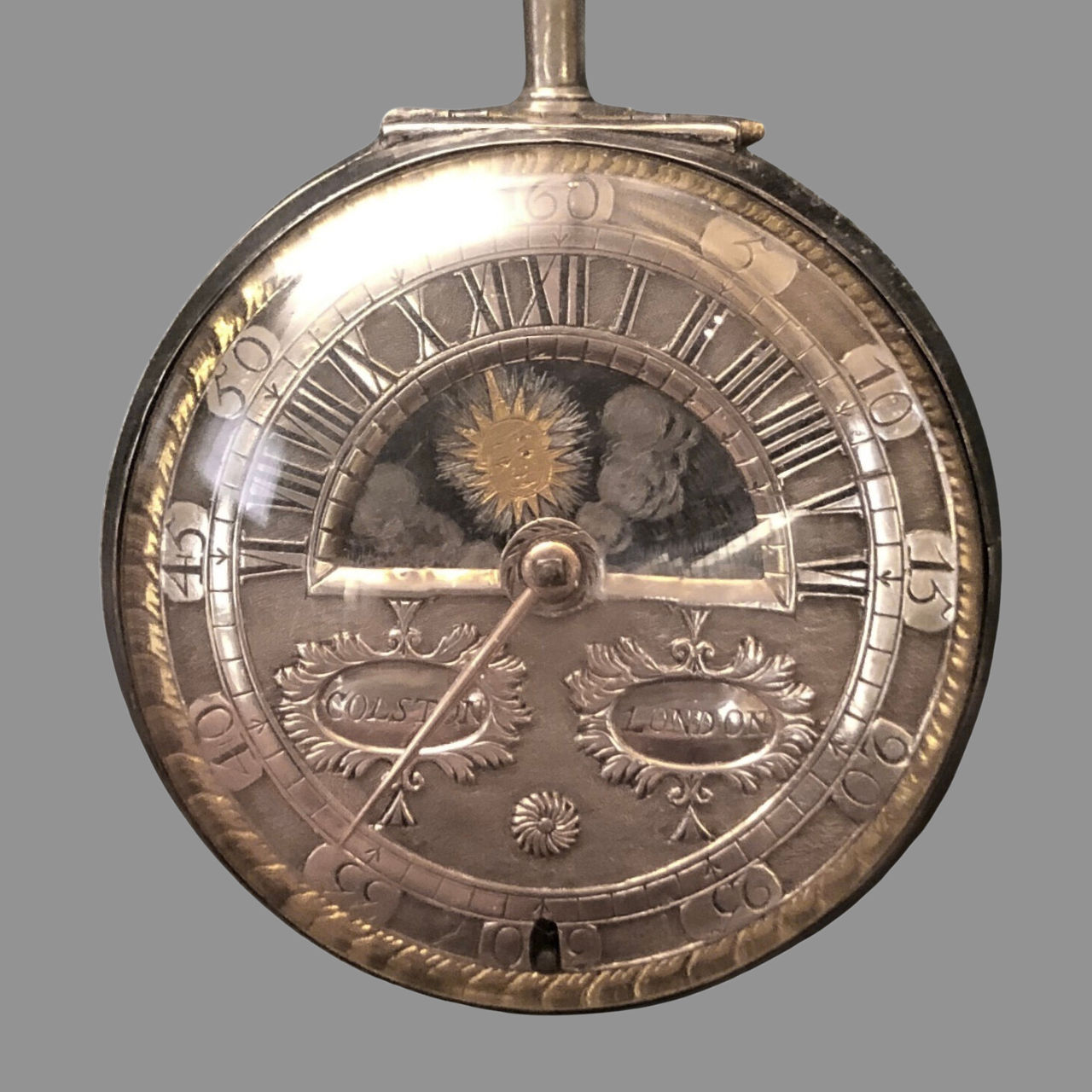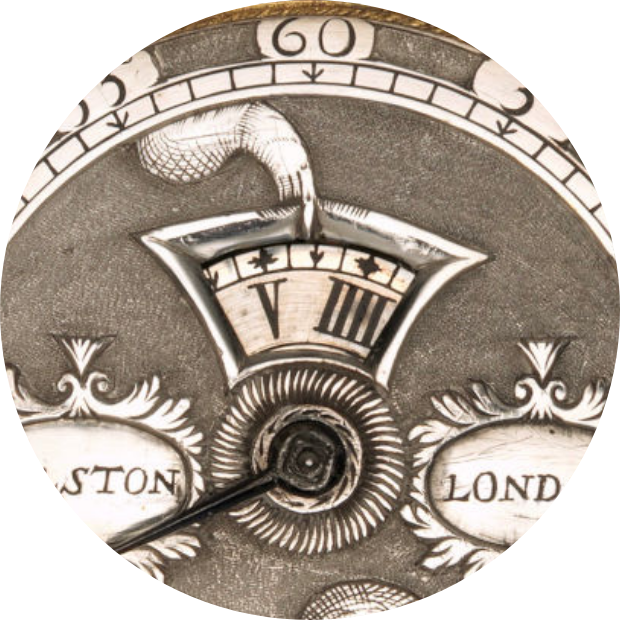Following the introduction of the balance spring in the mid-1670s, timekeeping was revolutionised. Watches had previously almost casually marked time but were now suddenly able to keep time to within a couple of minutes per day. In fact, so dramatic was the impact of the balance spring that, by 1680, most new watches incorporated the device.

Metropolitan Museum of Art New York – MET public domain image
Before the balance spring’s introduction, the vast majority of watches had only a single hand which moved from hour to hour, indicating on a ring calibrated for each half- or quarter-hour. Only a fraction of pre-balance spring watches displayed minutes yet the greater accuracy afforded by the balance spring’s introduction meant that minute display was now not only practical, but desirable. During this period there were no hard and fast rules for the display of minutes on a watch dial and, in England, a range of innovative time displays began to appear towards the end of the 17th and beginning of the 18th centuries. Shown above is a watch by Richard Colston. This watch, which dates to circa 1690, has broad apertures at the top through which the hours are displayed with additional markings for quarter hours. Minutes are shown at the edge of the dial and indicated via a central hand (the tip of the hand in the photograph has been broken and shortened. At the base of the dial, a smaller aperture shows the current date.

Richard Colston – Ashmolean Museum Oxford – photo © Alex Barter
Another innovative form of time display from this period is the so-called wandering hour watch. Shown above is a ‘sun and moon’ watch made once again by Richard Colston and dating to the very late 1600s. Here the hour is shown on a disc through a large central aperture. The disc is divided into two, during daytime hours, a blazing sun is seen crossing the aperture, a central extended ray points to the hours marked to the edge of the aperture. The silver champlevé dial has hours marked from VI until VI. When the sun disappears below the VI at the right-hand side of the dial, a moon will appear at the VI position to the left side of the dial. An extended ray from the moon then points to the hours in a similar fashion to the sun but this time against a night sky. Minutes are shown at the edge of the dial and are indicated via a central hand.
Richard Colston, a watchmaker from London, was made Free of the Clockmakers’ Company in 1682 and died before 1710.
